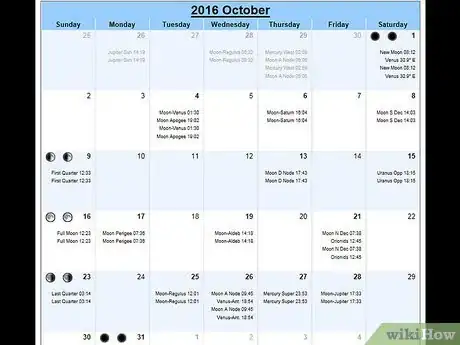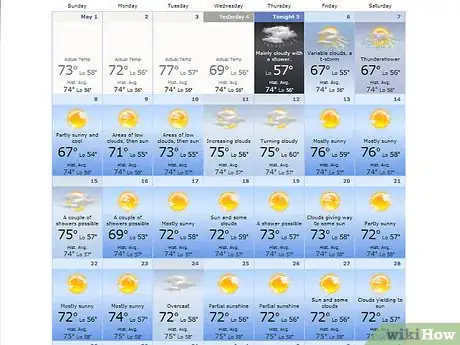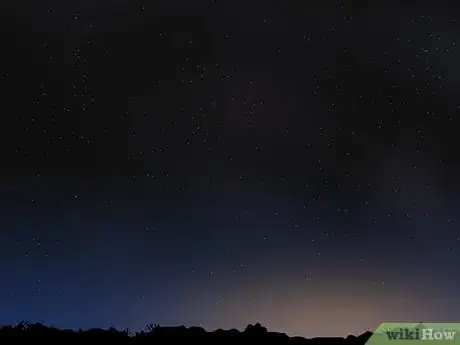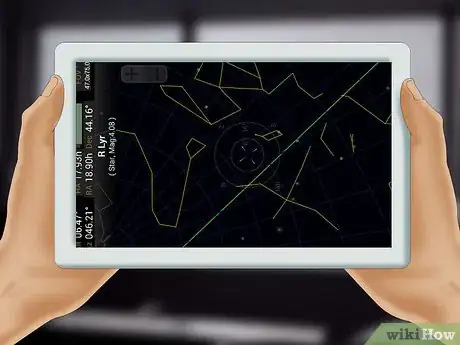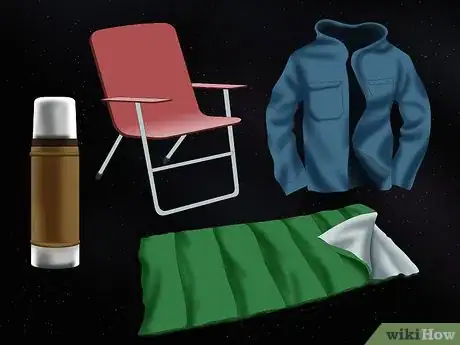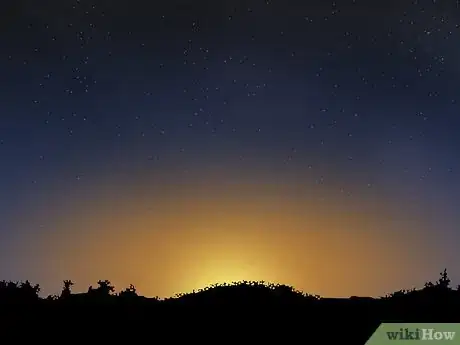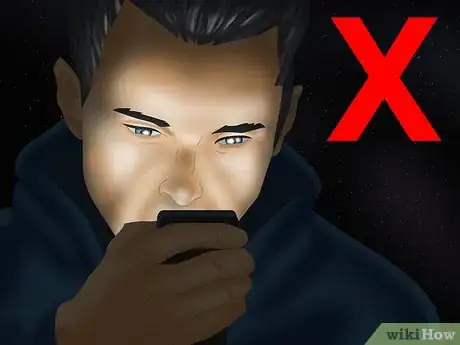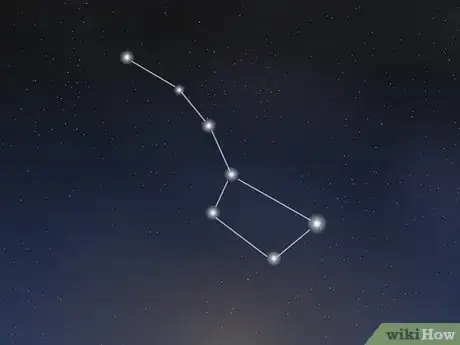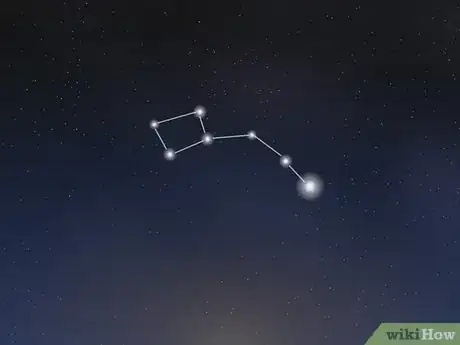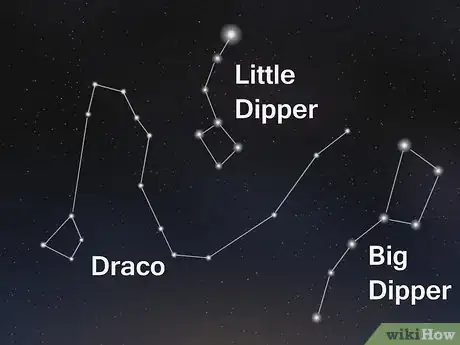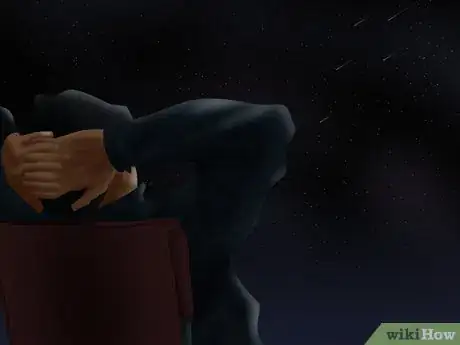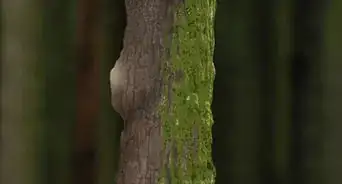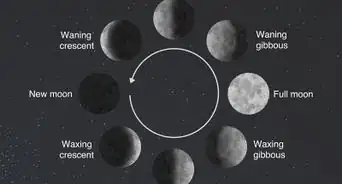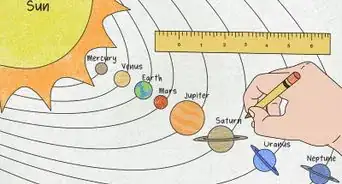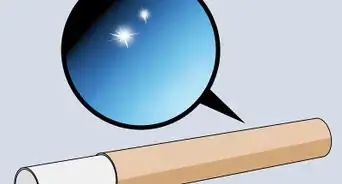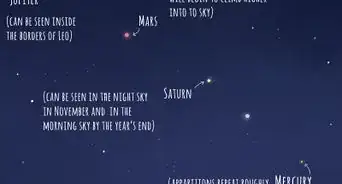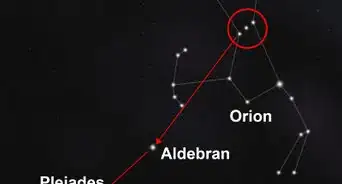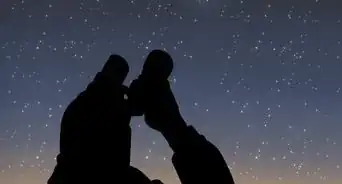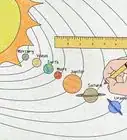This article was co-authored by Bess Ruff, MA. Bess Ruff is a Geography PhD student at Florida State University. She received her MA in Environmental Science and Management from the University of California, Santa Barbara in 2016. She has conducted survey work for marine spatial planning projects in the Caribbean and provided research support as a graduate fellow for the Sustainable Fisheries Group.
There are 13 references cited in this article, which can be found at the bottom of the page.
This article has been viewed 57,747 times.
The Draconids meteor shower occurs every year in early October, usually peaking in the first or second week of the month when the Earth is passing through debris left from the comet 21p/Giacobini-Zinner. It is best viewed from the Northern Hemisphere. This meteor shower produced 200-1000 meteors per hour in 1933 and 1946, although it is usually much quieter. It peaks during evening hours rather than early morning hours, like other meteor showers, so it's usually easier to get out and see it.[1] The next shower occurs on October 8, 2021 between 8pm and 4am ET for viewers in the Northern Hemisphere.
Steps
Planning When and Where to See the Draconids Meteor Shower
-
1Check the dates for this year. The dates when the Draconids will be most visible vary from year to year, but are usually sometime in the first couple of weeks of October (usually between the 7th and 9th). A quick Google search will tell you when to be ready during the year that you want to see them.[2]
- In 2018, the shower is expected to peak on October 9th. While astronomers are not predicting an especially spectacular display this year, the new moon on October 9th will mean better-than-average visibility during the peak of the shower.[3]
-
2Look at the weather report. The meteors will be most visible on a night with very few clouds and no rain. If the peak night is a cloudy one, you can consider trying to see the shower on the night before or after, but there’s no guarantee that you’ll see anything.[4]Advertisement
-
3Scout a good location. The best place to see the meteor shower will be in a very dark place with lots of open sky, away from the lights of cities and suburbs. You may need to drive a little ways out into the country to accomplish this, or you might want to seek out a national or state park if there’s one near you. Aim for a place with a clear view of the north with no trees or tall buildings on the horizon.[5]
- There are also a variety of websites devoted to helping you find a “dark site” to watch the night sky without obstruction, so check one of those out if you don’t know of a good place.[6]
Going to See the Draconids Meteor Shower
-
1Download a stargazing app or check a constellation map. There are dozens of apps (many of them free) that help you locate stars in the night sky, and you can find plenty of maps to help online or in an astronomy book. You may want to look at one in advance. The meteor shower will appear to be coming from the constellation Draco the Dragon, so it may help you to know where to look for Draco.[7]
- A few good free stargazing apps include Star Walk 2, SkyView Free, and Star Chart.
- The Dragon is located between the Big Dipper and the Little Dipper.[8]
- If you’re going to use an app, you’ll probably want to check it before you leave home to be sure you can locate the appropriate stars. Looking at your phone a lot in the dark will make it hard for your eyes to adjust well enough to see the stars and meteors.
-
2Pack your gear. You’ll want something comfy to sit or lie on, like a blanket or a sleeping bag. Depending on the weather, you will probably also want lots of warm layers and maybe a thermos of a nice, hot beverage.
- You may want a chair if you’re not interested in lying on the ground. You’ll have to tilt your head back and look straight up unless your chair reclines, so you may want to pack a beach chair. You could also consider lying in the bed of your truck or on the hood of your car.
- Don’t bother with binoculars or a telescope. You won’t be able to adjust your focus fast enough to see anything.[9]
-
3Leave in time to arrive before it gets dark in the evening. Many meteor showers are best viewed right before dawn, but you will have better luck seeing the Draconids right as it gets dark. Aim to be in place right before the sun sets.[10]
-
4Avoid looking at lights to preserve your natural night vision. Avoid looking at the screen of your phone or other mobile device for a few minutes before you look at the sky. It takes about 30 minutes for your eyes to completely adjust to the darkness after you’ve been in bright light, so turn off all of your light sources as soon as you arrive.[11]
- If you need to look at a light, try to do it with 1 eye closed. Don’t open that eye again until you’re in the darkness. The eye you closed won’t have to readjust.[12]
-
5Locate the Big Dipper. It has 8 stars, but usually only 7 of them will be visible to the naked eye. Look north and search for 7 stars that make up a bowl with a handle. On October evenings, the Big Dipper will be very close to the horizon.
- If you are anywhere north of the latitude of Little Rock, Arkansas (35 degrees north latitude), you should be able to see it as soon as it gets dark. If you’re south of that latitude, you may still be able to see some meteors, but you should use the Little Dipper as a reference point.[13]
-
6Locate the Little Dipper. If you’ve found the Big Dipper, look nearby for the North Star. You can find it by looking at the bowl of the Big Dipper and tracing a line up from the 2 stars that make up the outer edge of the bowl. The North Star is the last star in the handle of the Little Dipper.[14]
- The Little Dipper will be visible at any time of night anywhere north of the Tropic of Cancer (23.5 degrees north latitude).
- If you can’t find the Big Dipper, you may still be able to find the Little Dipper by looking North and searching for the distinctive bowl and handle shape.
-
7Find Draco the Dragon. If you found both Dippers, you probably have a good shot at finding Draco. You’ll need a pretty dark sky.[15] Once you’ve spotted the North Star, look for a long, glittering chain of very faint stars that curls between the North Star and the Big Dipper. Follow the chain upward to find Draco’s 2 brightest stars, Estanin and Rastaban.[16]
-
8Keep looking! You may have to wait a while. If you can locate Draco the Dragon’s 2 brightest stars, Estanin and Rastaban, you can often see the meteors emerging from the head of the dragon.[17]
- You don't have to locate Draco or its brightest stars in order to see the meteors. If you’re not positive you’ve found it, just keep looking in the direction of the Big and Little Dippers, and a meteor will likely catch your eye.
- Usually you can see about 10 meteors per hour if it’s a very clear night.[18]
References
- ↑ http://earthsky.org/astronomy-essentials/earthskys-meteor-shower-guide
- ↑ http://earthsky.org/astronomy-essentials/everything-you-need-to-know-draconid-meteor-shower
- ↑ http://earthsky.org/?p=180611
- ↑ http://earthsky.org/astronomy-essentials/everything-you-need-to-know-draconid-meteor-shower
- ↑ http://earthsky.org/astronomy-essentials/everything-you-need-to-know-draconid-meteor-shower
- ↑ http://darksitefinder.com/
- ↑ http://www.space.com/30759-draconid-meteor-shower-peaks-this-week.html
- ↑ http://www.cbsnews.com/news/how-to-watch-the-draconid-meteor-shower-this-week/
- ↑ http://www.space.com/30759-draconid-meteor-shower-peaks-this-week.html
- ↑ http://earthsky.org/astronomy-essentials/everything-you-need-to-know-draconid-meteor-shower
- ↑ http://www.nytimes.com/2015/10/09/science/draconid-meteor-shower-how-to-watch.html?_r=0
- ↑ http://thegrownetwork.com/the-5-minute-prepper-18-improve-your-natural-night-vision/
- ↑ http://earthsky.org/favorite-star-patterns/big-and-little-dippers-highlight-northern-sky#how
- ↑ http://earthsky.org/favorite-star-patterns/big-and-little-dippers-highlight-northern-sky#how
- ↑ http://earthsky.org/astronomy-essentials/locate-dragons-eyes-and-radiant-point-for-draconid-meteors
- ↑ http://www.universetoday.com/31296/kids-astronomy-draco-the-dragon-with-the-puffy-tale/
- ↑ http://www.timeanddate.com/astronomy/meteor-shower/draconid.html
- ↑ http://www.nytimes.com/2015/10/09/science/draconid-meteor-shower-how-to-watch.html?_r=0
- ↑ http://www.theskyscrapers.org/meteors/
